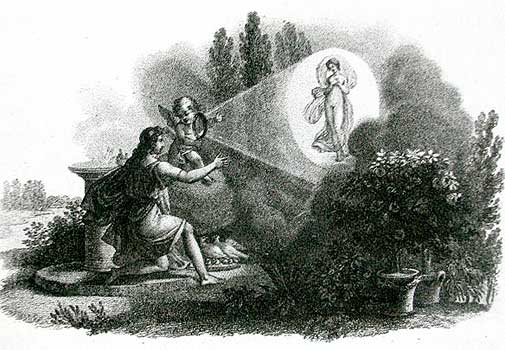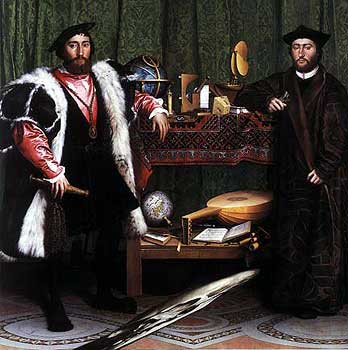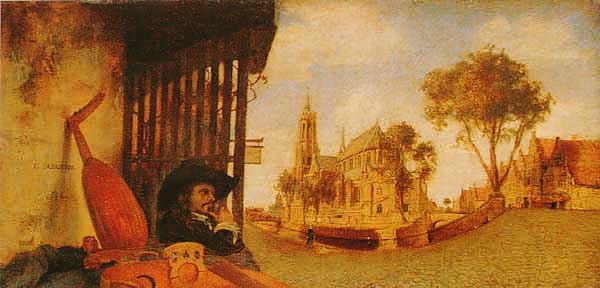Through the Magnifying Glass: Painters or Photographers?
by Doifel Videla
II
- - - - - - - - - - - - -
PHOTOPTICS
Some four years ago, in my classes for film students at Arcis University in Santiago de Chile, and in several workshops, I began questioning the term photography, which comes from photos = light and graphos= writing or drawing. I was bothered by the fact that the term photography was used to name a chemical system invented precisely to replace the graphical system.
The error originated, in my opinion, not only with the name itself, but also with its definition. Any book on photography defines a photograph as an "image obtained through the action of light on a photosensitive material." If we took this as our starting point, then a bikini line on tanned skin would fit our definition perfectly, as would the mark left by any object on a newspaper exposed to the sun, or the marks on metals such as silver, bronze or copper. Clearly, we would never have come up with photography as we know it by paying heed to such a definition; even though in this field no one seems to care about definitions. However, an accurate definition that can encompass not only photography, but also analogous disciplines such as Renaissance painting, cinema and video, is possible. An example of this definition could be: "Manual, chemical or electronic recording of an optically projected image", or more concisely: "The recording of a projected image".
 |
| Unknown. The Miraculous Mirror, 18th century. Engraving. International Museum of Photography at George Eastman House, Rochester, N.Y. |
On the other hand, if we wanted to give a name to this definition, we would clearly need to include the term optic because if light is not organized optically, as occurs in our eyes, it loses all meaning by not providing an image and becoming just a radiant chaos. If, for example, we defined writing as the action of ink on paper, without mentioning the pen as the organizing element, we would have to accept that an inkblot on paper is writing. In recent years I have proposed the term Photoptics, which could stand for optically organized light.
Optics, as a system that organizes light, gives birth to a kind of syntax that is analogous to the distinctive features of the human eye and can be understood by our interpretative system. This optical syntax allows us to make sense of notions such as focusing, framing, choosing a vantage point, varying the perspective, etc. This role of optics goes far beyond the recording system, which can vary (it can be a pencil, a photographic plate, a CCD chip) without altering the continuity and conceptual unity of the visual syntax and can be decoded by any person with an optical education. On the other hand, images that are not generated through an optical process are the expression of associative mental images, rather than visual representations, and they have played a different role in the history of the visual arts. A classic example is children's painting, which is very similar in most parts of the world, and omits entire portions of the visual reality in order to obtain a mental representation. These images represent the child's understanding more than what he or she actually sees. Lens-based images are point-by-point mappings from an analogous source, such as the projected image. For them to work, they need to create a matrix first, and this is precisely what Renaissance painting did by submitting itself to the optical pattern, unconsciously transforming itself into a kind of photography.
 |
| Hans Holbein. The Ambassadors, 1533. In the foreground, a skull that has been deformed through optical means can be observed . From David Hockney's book, p. 56. |
The title of Hockney's book "Secret knowledge…" reminds us that the use of projected images was kept secret for centuries. I would claim that it was not a secret as such, otherwise Hockney would not have been able to find sufficient evidence to prove his thesis on so short notice. It could rather be the result of a deliberate attempt at providing painting with a sacred and supernatural aura. This can easily be understood if we recall that for centuries painting served a religious function, that the Inquisition prohibited the use of optical instruments and that in general no painter would have cast doubts on his own reputation by giving technical explanations to the public and his competitors. The truth is that before the advent of optical devices nobody, no civilization or culture, had managed to produce "realist" paintings, and suddenly, after this date, most painters showed an almost incomprehensible talent for them. It goes without saying that various generations of painters had to pass through a long period of apprenticeship, surrendering rigorously to the “tyranny” of optical instruments, before this concept was finally accepted as "natural".
 |
|
The
evolution towards optical representation. From David Hockney's book,
p. 166-167
|
The "secret" fell into oblivion and the quasi-religious desire for the existence of demigods in the pantheon of arts could count on the accomplice negligence of most collectors, admirers and museum curators. After all, why look for explanations if time itself would take care of erasing all traces? As Hockney explains, the use of computers would change all of this by making it possible to discover by simulation the type of optics and techniques that could have been used. After all, paintings cannot be hidden and they are themselves the evidence that a projected image was used as pattern.
 |
| Carel Fabritius. 1625. View of Delft with a Musical Instrument Seller's Stall. The optical deformity was probably created by the use of a camera oscura with a wide angle lens. |
The silence regarding the explanation of the supernatural character of “naturalistic” painting would also have different consequences, particularly for the invention of photography.